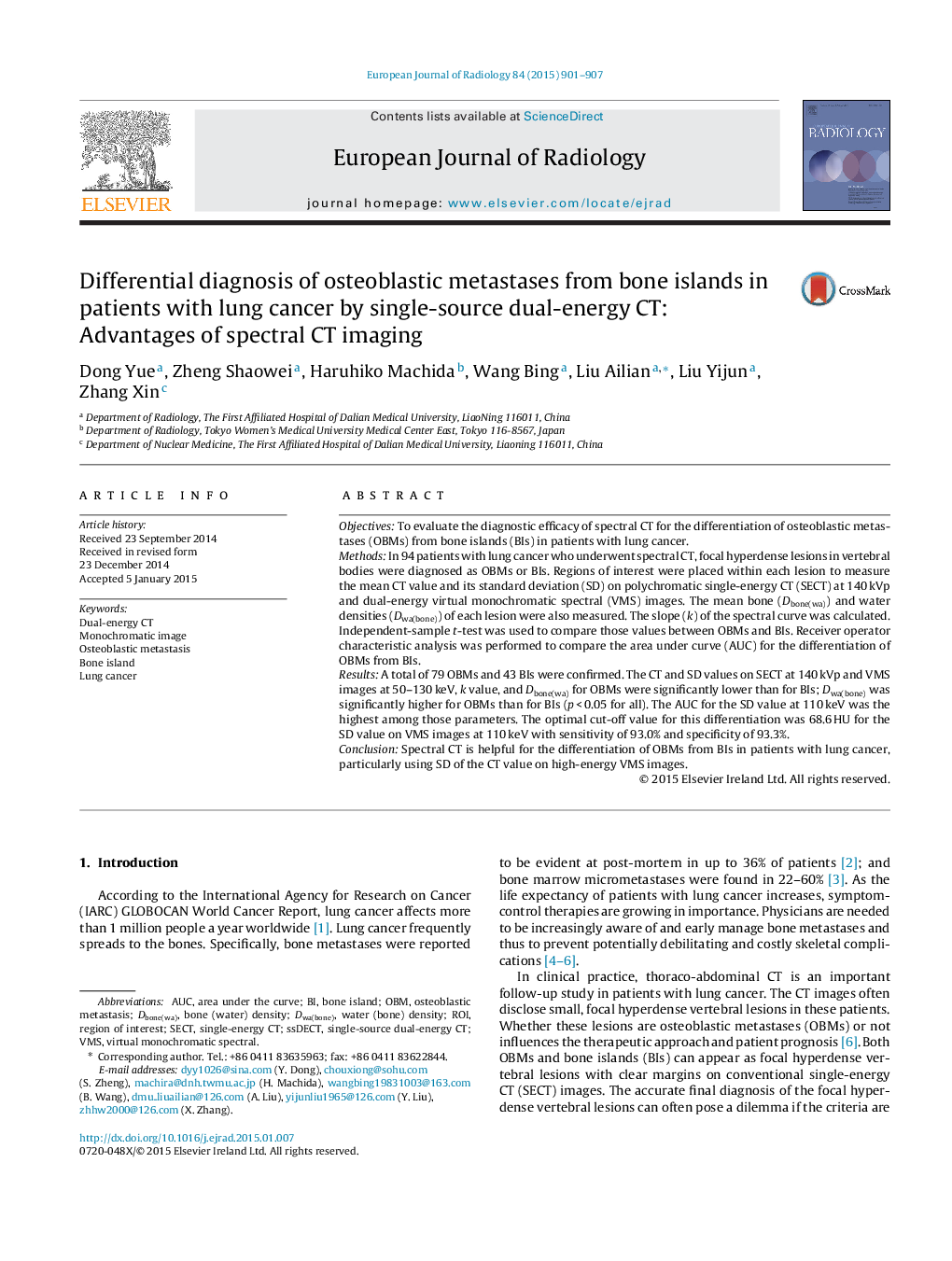| Article ID | Journal | Published Year | Pages | File Type |
|---|---|---|---|---|
| 4225420 | European Journal of Radiology | 2015 | 7 Pages |
•Spectral CT were useful for the follow-up of spinal lesions in patients with lung cancer.•Spectral CT were useful for more accurate differential diagnosis of OBMs and BIs.•110 keV virtual monochromatic images were the optimal for providing this differentiation.
ObjectivesTo evaluate the diagnostic efficacy of spectral CT for the differentiation of osteoblastic metastases (OBMs) from bone islands (BIs) in patients with lung cancer.MethodsIn 94 patients with lung cancer who underwent spectral CT, focal hyperdense lesions in vertebral bodies were diagnosed as OBMs or BIs. Regions of interest were placed within each lesion to measure the mean CT value and its standard deviation (SD) on polychromatic single-energy CT (SECT) at 140 kVp and dual-energy virtual monochromatic spectral (VMS) images. The mean bone (Dbone(wa)) and water densities (Dwa(bone)) of each lesion were also measured. The slope (k) of the spectral curve was calculated. Independent-sample t-test was used to compare those values between OBMs and BIs. Receiver operator characteristic analysis was performed to compare the area under curve (AUC) for the differentiation of OBMs from BIs.ResultsA total of 79 OBMs and 43 BIs were confirmed. The CT and SD values on SECT at 140 kVp and VMS images at 50–130 keV, k value, and Dbone(wa) for OBMs were significantly lower than for BIs; Dwa(bone) was significantly higher for OBMs than for BIs (p < 0.05 for all). The AUC for the SD value at 110 keV was the highest among those parameters. The optimal cut-off value for this differentiation was 68.6 HU for the SD value on VMS images at 110 keV with sensitivity of 93.0% and specificity of 93.3%.ConclusionSpectral CT is helpful for the differentiation of OBMs from BIs in patients with lung cancer, particularly using SD of the CT value on high-energy VMS images.
